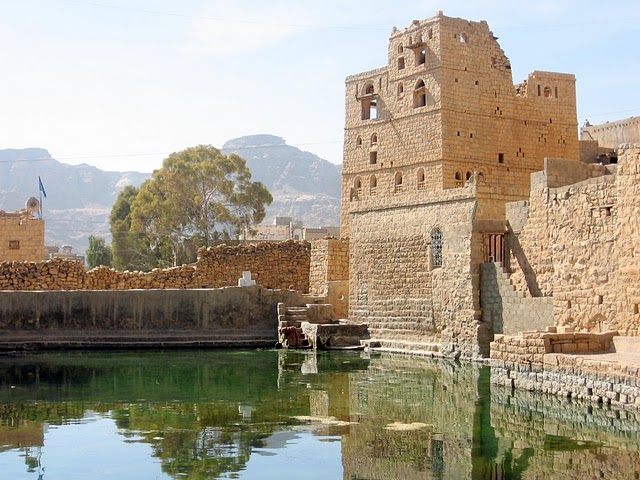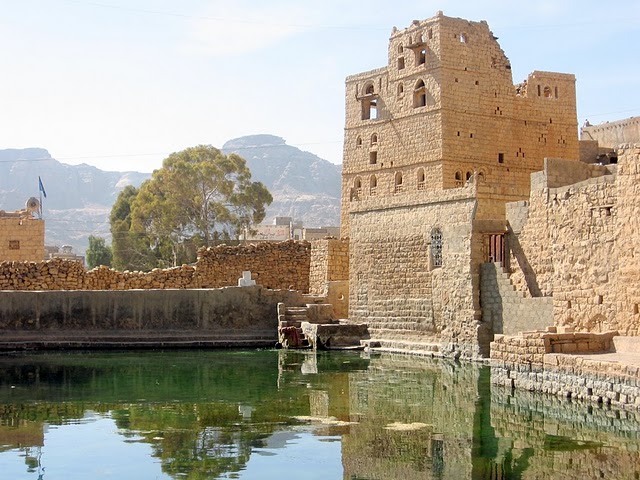The Forgotten Kingdoms of Ancient Yemen

In the southwestern corner of the Arabian Peninsula lies a land often overshadowed by the more renowned civilizations of ancient history. Yemen, a country with a rich tapestry of history and culture, holds within its borders the remnants of forgotten kingdoms that once flourished in the ancient world. These civilizations, with their unique contributions and complex societies, have left behind a legacy that is both fascinating and enigmatic.
The Land of Frankincense and Myrrh
Yemen’s strategic location along the trade routes connecting the Mediterranean to the Indian Ocean played a significant role in its historical prominence. For centuries, it was the heart of the incense trade, handling precious commodities like frankincense and myrrh, which were highly prized in the ancient world for their use in religious rituals and medicine. The ancient kingdoms of Yemen thrived on this trade, becoming crucial players in the global economy of antiquity.
The Kingdom of Saba (Sheba)
One of the most well-known of Yemen’s ancient kingdoms is Saba, also known as Sheba. The Sabaeans, who ruled from the 10th century BCE to the 6th century CE, are perhaps best known for their opulent palaces and grandiose temples. Their capital, Ma’rib, was a city of great architectural and engineering prowess, featuring the famous Ma’rib Dam. This engineering marvel, which once diverted the waters of the Wadi Adhan, was crucial for agriculture in the arid region and supported a thriving civilization.
Saba’s prominence in biblical texts, particularly the story of the Queen of Sheba visiting King Solomon, highlights its importance in the ancient world. The Sabaeans were renowned for their wealth and sophistication, but their kingdom eventually declined due to a combination of factors, including environmental changes, overexploitation of resources, and political instability.
The Kingdom of Qataban
North of Saba, the Kingdom of Qataban rose to prominence around the 5th century BCE. Unlike the Sabaeans, who are often associated with grandeur and opulence, the Qatabanians were known for their administrative efficiency and military prowess. Their capital, Timna, was a key hub in the incense trade and played a vital role in regional politics.
Qataban’s political influence was marked by its ability to maintain a delicate balance of power between competing regional entities. This balance was crucial for the kingdom’s survival and success. The Qatabanians left behind a legacy of inscriptions and monuments, including the impressive ruins of the Temple of Awwam, which provide insight into their religious practices and social organization.
The Kingdom of Hadramaut
To the east of Qataban lay the Kingdom of Hadramaut, another influential ancient Yemeni kingdom. Hadramaut’s history dates back to around the 6th century BCE and is characterized by its involvement in maritime trade and its strategic location along the trade routes connecting the Arabian Peninsula with the Indian subcontinent.
Hadramaut was known for its extensive network of trade relations and its role as a cultural and economic bridge between the East and the West. The kingdom’s capital, Shabwa, was a bustling metropolis with impressive architectural and urban planning achievements. The ruins of Shabwa and other Hadramautian sites reveal a sophisticated society with a strong emphasis on commerce and cultural exchange.
The Kingdom of Himyar
The Himyarites, who dominated southern Arabia from the 2nd century BCE to the 6th century CE, were perhaps the most influential of Yemen’s ancient kingdoms. The Himyarite kingdom, with its capital at Zafar, was known for its extensive trade networks, including connections with the Roman Empire and the Byzantine Empire.
The Himyarites were notable for their adoption of Christianity in the 4th century CE, making them one of the first Arabian kingdoms to embrace the religion. This adoption had significant cultural and political implications, as it connected Himyar to the broader Christian world and influenced its interactions with neighboring powers.
Despite their initial success, the Himyarites faced increasing pressure from external forces, including the expanding Sassanian Empire and later the rise of Islam. The kingdom’s decline was marked by internal strife and external invasions, culminating in its eventual absorption into the rapidly expanding Islamic state.

The Legacy of Ancient Yemen
The ancient kingdoms of Yemen, while often overshadowed by their more famous contemporaries, played a crucial role in the development of early civilization in the Arabian Peninsula. Their contributions to trade, architecture, and culture left an indelible mark on the region’s history.
Archaeological discoveries and inscriptions have shed light on these forgotten civilizations, revealing a complex and sophisticated society with a rich cultural heritage. The ruins of ancient cities, temples, and inscriptions provide valuable insights into the lives and achievements of the Sabaeans, Qatabanians, Hadramautians, and Himyarites.
The Challenge of Preservation
Despite their historical significance, many of Yemen’s ancient sites face significant threats from environmental conditions, conflict, and neglect. The ongoing political instability in Yemen has compounded these challenges, making it difficult to protect and preserve these invaluable cultural heritage sites.
Efforts by archaeologists, historians, and conservationists are crucial in safeguarding Yemen’s ancient legacy. International cooperation and support are needed to ensure that these forgotten kingdoms are not lost to history but are instead celebrated and preserved for future generations to appreciate.
Conclusion
The forgotten kingdoms of ancient Yemen offer a glimpse into a rich and complex tapestry of history that has often been overlooked. From the opulent Sabaeans to the maritime Hadramautians and the influential Himyarites, these civilizations contributed significantly to the cultural and economic development of the ancient world. As we continue to explore and study their legacies, we gain a deeper understanding of the diverse and interconnected history that shaped our world.



